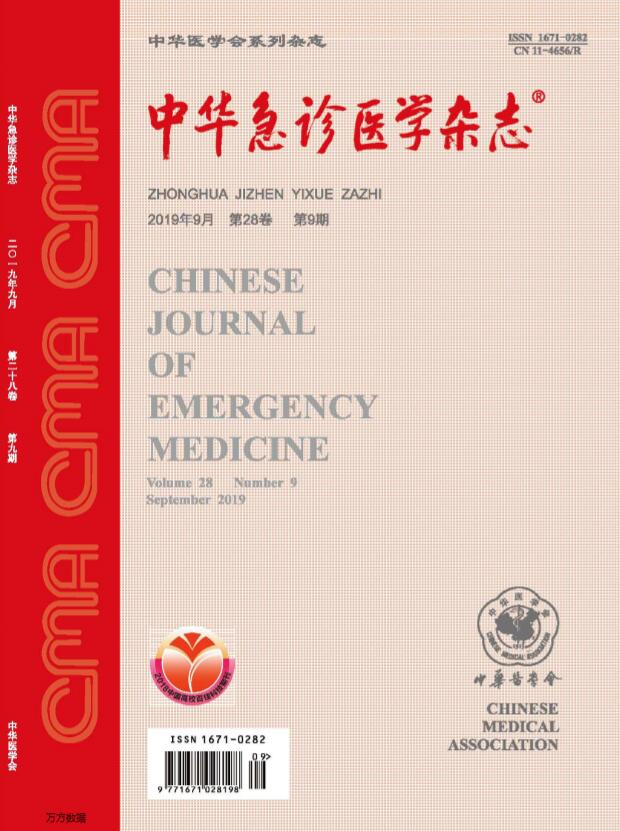Protective effect of Baicalin on lipopolysaccharide induced H9C2 cell inflammation and its mechanism
Q4 Nursing
引用次数: 1
Abstract
Objective To investigate the protective effect of Baicalin on inflammation induced by lipopolysaccharide in H9C2 cardiomyocytes and its possible mechanism. Methods H9C2 myocardial cells were cultured and pretreated with baicalin at the final concentration of 10, 20, 30 μmol/L for 12 hours, then stimulated with LPS at the final concentration of 1 μg/mL for 6 hours. The control group was treated with the same amount of saline to collect cell samples. CCK-8 (The Cell Counting Kit-8) was used to detect cell activity, enzyme-linked immunosorbent assay (ELISA) was used to detect the expression levels of interleukin-6 (IL-6), interleukin-1beta (IL-1β), tumor necrosis factor-alpha (TNF-α), Western blot was used to detect the protein expression levels of NF-κB p65, p-NF-κB p65, p38 MAPK, p-p38 MAPK, IκBα and p-IκBα. SPSS 23.0 statistical software was used. Independent sample t test was used for comparison between two groups, and one-way ANOVA test was used for comparison among multiple groups. Results The survival rate of myocardial cells in the control group was (93.67 +1.453)%. Compared with the control group, the survival rate of H9C2 myocardial cells induced by LPS decreased (P 0.05). Compared with LPS group, the survival rate of H9C2 myocardial cells in baicalin intervention group increased (P 0.05). Conclusions Baicalin may alleviate LPS-induced cardiomyocyte inflammation by inhibiting the activation of NF-kappa B and p38 MAPK, and improve cell survival. Key words: Baicalin; Lipopolysaccharide; Cardiomyocyte; NF-κB; P38 MAPK; Sepsis; Inflammation黄芩苷对脂多糖诱导H9C2细胞炎症的保护作用及其机制
目的探讨黄芩苷对脂多糖诱导的H9C2心肌细胞炎症的保护作用及其可能机制。方法用终浓度为10、20、30μmol/L的黄芩苷预处理H9C2心肌细胞12小时,再用终浓度为1μg/mL的LPS刺激6小时。对照组用相同量的生理盐水处理以收集细胞样本。采用CCK-8(细胞计数试剂盒-8)检测细胞活性,酶联免疫吸附试验(ELISA)检测白细胞介素-6(IL-6)、白细胞介蛋白-1β(IL-1β)、肿瘤坏死因子-α(TNF-α)的表达水平,Western blot检测NF-κB p65、p-NF-κBp65、p38MAPK、p-p38MAPk、IκBα和p-IκB a的蛋白表达水平。采用SPSS 23.0统计软件。两组间采用独立样本t检验进行比较,多组间采用单因素方差分析进行比较。结果对照组心肌细胞存活率为(93.67+1.453)%,LPS诱导的H9C2心肌细胞的存活率较对照组降低(P<0.05),结论黄芩苷可通过抑制NF-κB和p38 MAPK的活化来减轻LPS诱导的心肌细胞炎症,提高细胞存活率。关键词:黄芩苷;脂多糖;心肌细胞;NF-κB;p38mapk;脓毒症;炎症
本文章由计算机程序翻译,如有差异,请以英文原文为准。
求助全文
约1分钟内获得全文
求助全文
来源期刊

中华急诊医学杂志
Nursing-Emergency Nursing
CiteScore
0.10
自引率
0.00%
发文量
8629
期刊介绍:
Chinese Journal of Emergency Medicine is the only national journal which represents the development of emergency medicine in China. The journal is supervised by China Association of Science and Technology, sponsored by Chinese Medical Association, and co-sponsored by Zhejiang University. The journal publishes original research articles dealing with all aspects of clinical practice and research in emergency medicine. The columns include Pre-Hospital Rescue, Emergency Care, Trauma, Resuscitation, Poisoning, Disaster Medicine, Continuing Education, etc. It has a wide coverage in China, and builds up communication with Hong Kong, Macao, Taiwan and international emergency medicine circles.
 求助内容:
求助内容: 应助结果提醒方式:
应助结果提醒方式:


